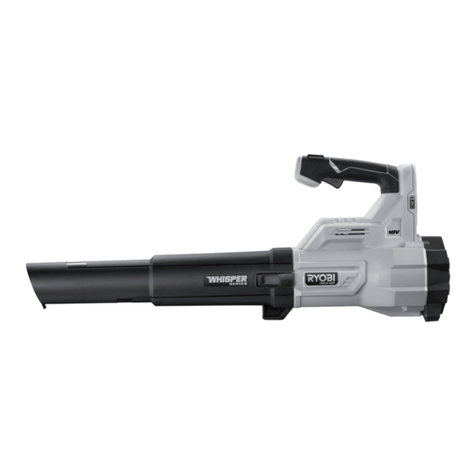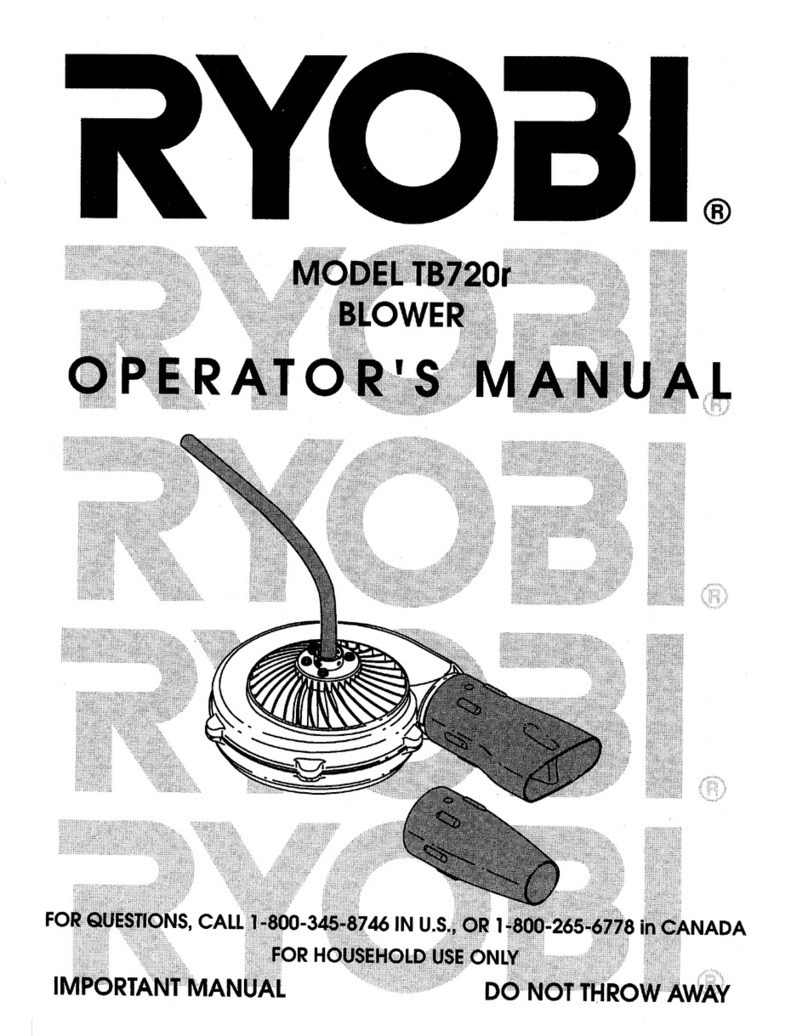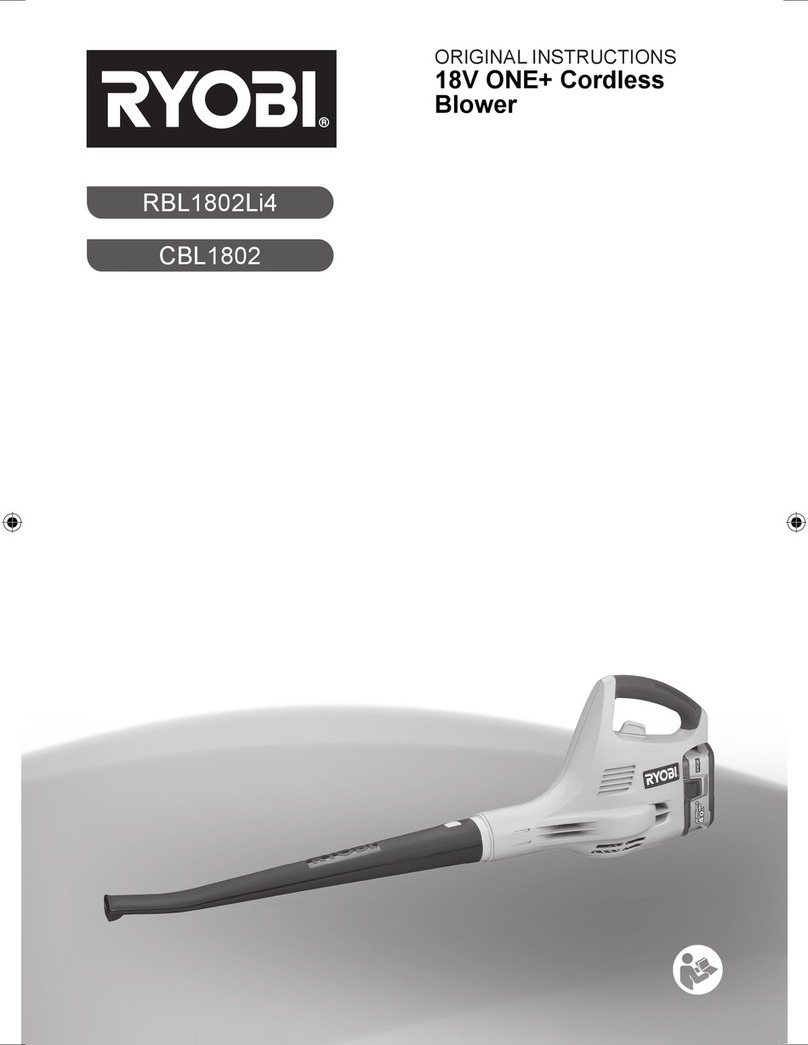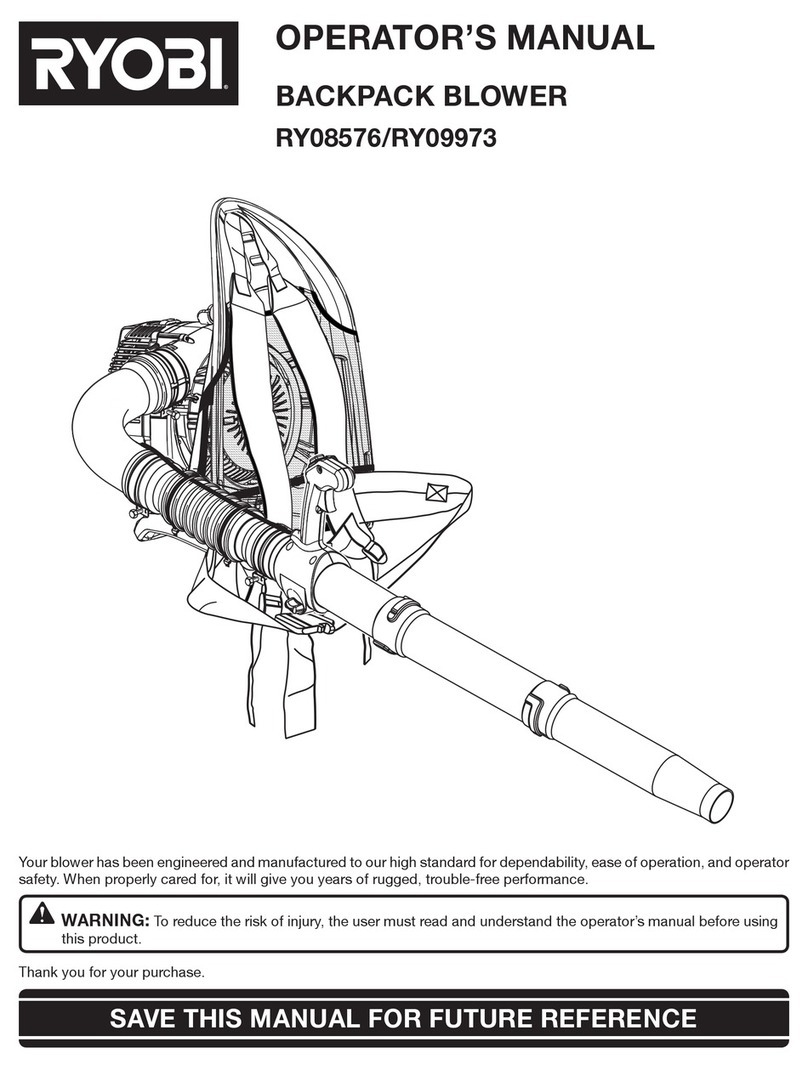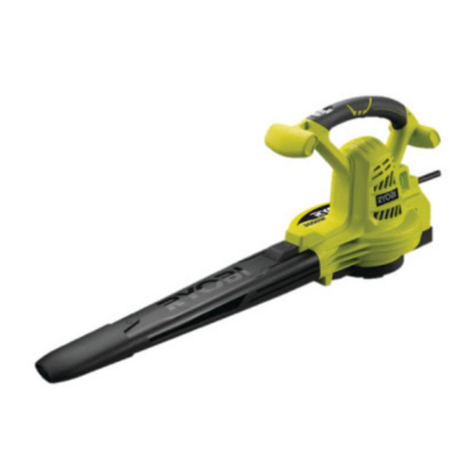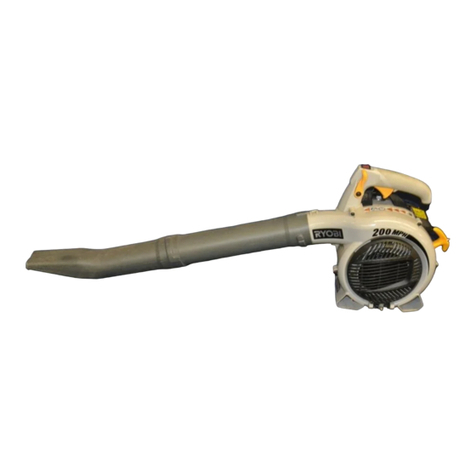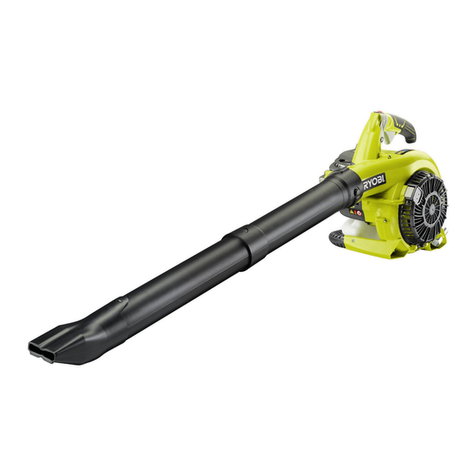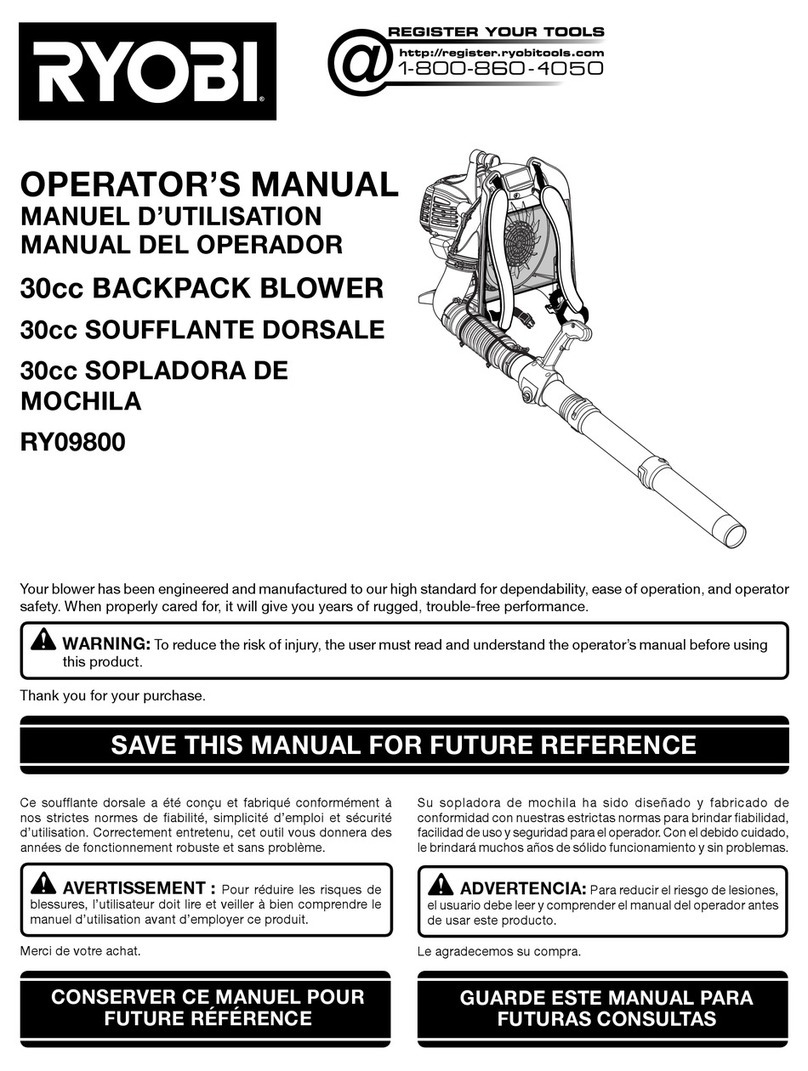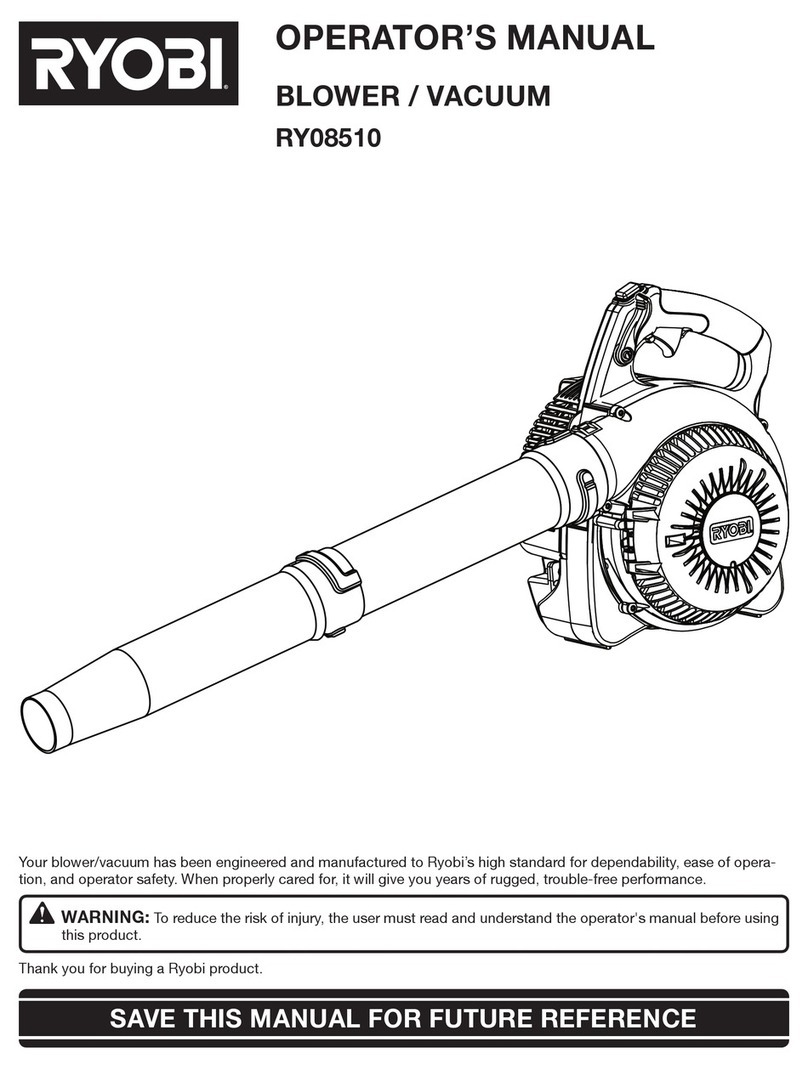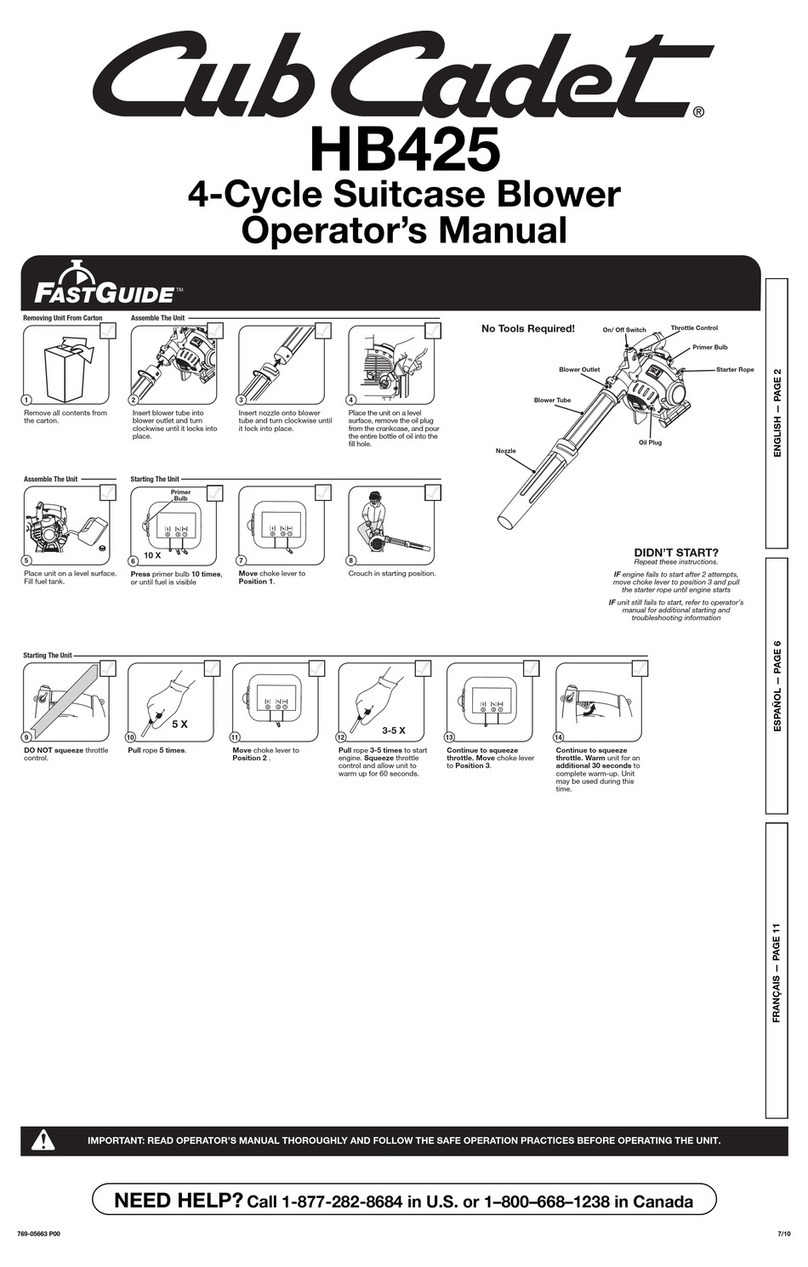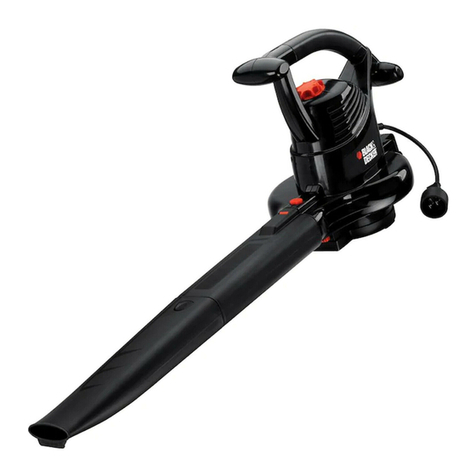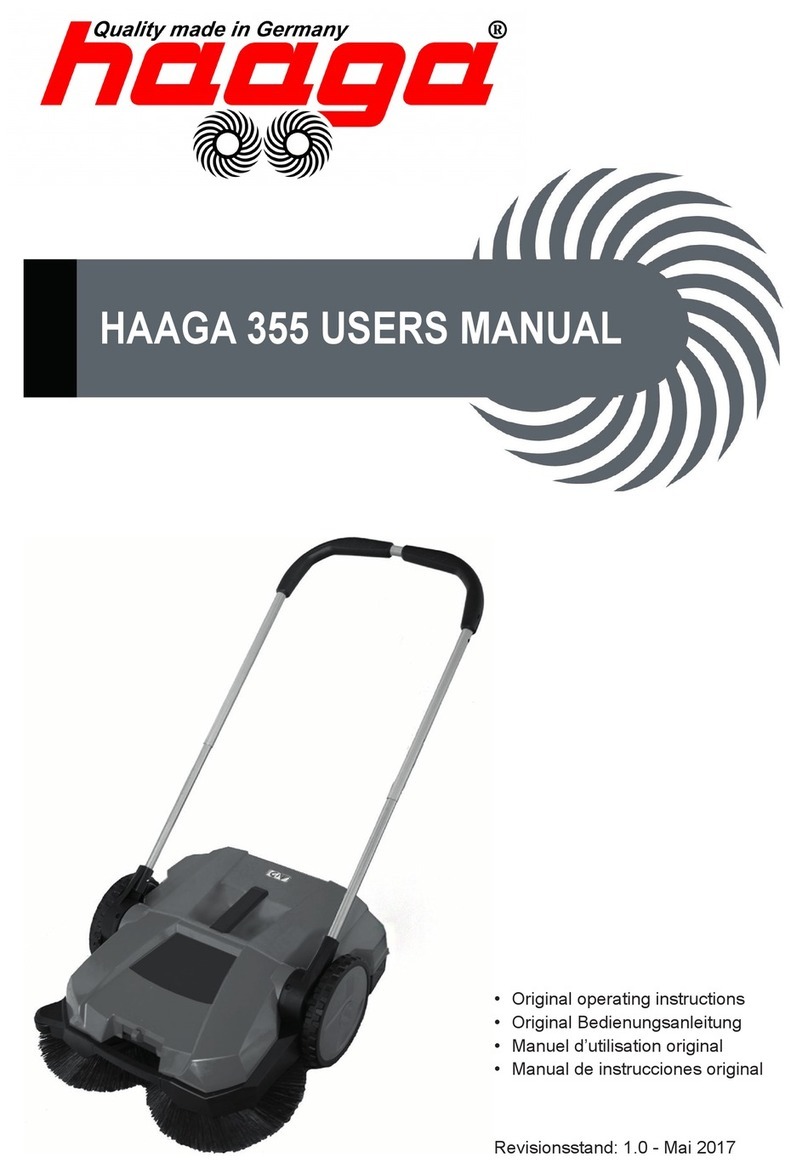2
Do not operate in poor lighting. The operator requires a
clear view of the work area to identify potential hazards.
Use of hearing protection reduces the ability to hear
warnings (shouts or alarms). The operator must pay
extra attention to what is going on in the working area.
Only use enough throttle (power) to complete the task,
this will reduce the potential for injury caused by noise
and vibration.
Operating similar products nearby increases both the risk
of hearing injury and the potential for other persons to
enter your working area.
Keep firm footing and balance. Do not overreach.
Overreaching can result in loss of balance or exposure
to hot surfaces.
Keep all parts of your body away from any moving part.
Rotating impeller blades can cause severe injury. Stop
the engine and ensure impeller blades have stopped
rotating before opening the vacuum door, installing/
changing tubes, opening or removing debris bag.
Do not touch the area around the silencer or engine of
the product, these parts get very hot during operation.
Inspect the product before each use. Check for loose
fasteners, fuel leaks, etc. Make sure all guards, and
handles are properly and securely attached. Replace any
damaged parts before use.
Never run the product without the proper equipment
attached. When used as a blower, always install the
blower tubes and close the door. When used as a
vacuum, always install the vacuum tubes and vacuum
bag.
Do not modify the product in any way or use parts
and accessories which are not recommended by the
manufacturer.
WARNING
If the product is dropped, suffers heavy impact or begins
to vibrate abnormally, immediately stop the product and
inspect for damage or identify the cause of the vibration.
Any damage should be properly repaired or replaced by
an authorised service centre.
Stop the engine and allow it to cool before refueling,
storing or transporting the product.
For refueling and fuel mixing, chose an area away from
sources of ignition (sparks, flames etc.), flammable
materials and which is well ventilated.
Do not smoke when mixing fuel or filling fuel tank.
Mix and store fuel in a container approved for fuel. Keep
an appropriate type of fire extinguisher nearby for dealing
with fuel fires.
Remember to securely refit the fuel tank filler cap before
starting the engine.
Wipe up any fuel spillage. Move 9 m away from refueling
site before starting engine.
It has been reported that vibrations from hand-held tools
may contribute to a condition called Raynaud’s Syndrome
WARNING
When using the product, the safety rules must be followed.
For your own safety and that of bystanders, please read
these instructions before operating the product. Please
keep the instruction safe for later use.
WARNING
Never allow children or people with reduced physical,
sensory or mental capabilities to operate, clean or
maintain the product. Local regulations may restrict the
age of the operator.
Tragic accidents can occur if the operator is not alert to the
presence of children. Children are often attracted to the
product and the blowing/vacuuming activity. Never assume
that children will remain where you last saw them.
Keep children out of the work area and under the watchful
care of a responsible adult other than the operator, be alert
and turn the product off if a child enters the area.
GENERAL SAFETY WARNINGS
Some regions have regulations that restrict the use of
the product to some operations. Check with your local
authority for advice. Read all instructions.
Do not allow children or untrained individuals to use this
product.
Ensure before each use that all controls and safety
devices function correctly. Do not use the product if the
“off” switch does not stop the engine.
Never start or run the engine in a closed or poorly
ventilated area; breathing exhaust fumes can kill.
Clear the work area before each use. Remove all objects
such as rocks, broken glass, nails, wire, or string which
can be blown a considerable distance by high velocity
air.
Wear full eye and hearing protection while operating the
product. This product is extremely noisy and permanent
hearing may result if precautions to limit our exposure,
reduce noise and wear hearing protection are not strictly
adhered to.
Wear heavy long trousers, boots, and gloves. Do not
wear loose fitting clothing, short trousers, jewellery of any
kind, or use with bare feet.
Secure long hair so it is above shoulder level to prevent
entanglement in moving parts.
Beware of thrown objects; keep all bystanders, children,
and pets at least 15 m away from work area.
Operate the product only at reasonable hours – not early
in the morning or late at night when people might be
disturbed.
Use rakes and brooms to loosen debris before blowing/
vacuuming.
Never operate the product in an explosive atmosphere.
Do not use this product when you are tired, ill, or under
the influence of alcohol, drugs, or medication.
